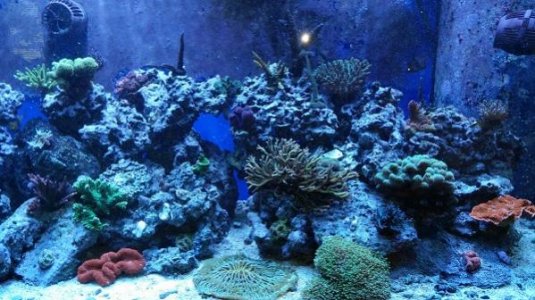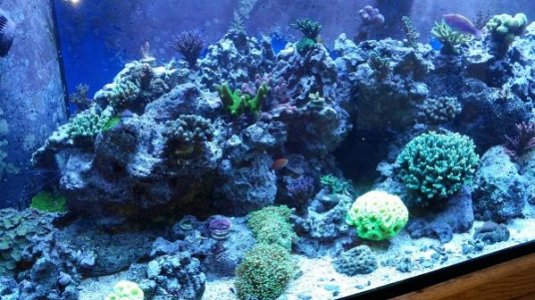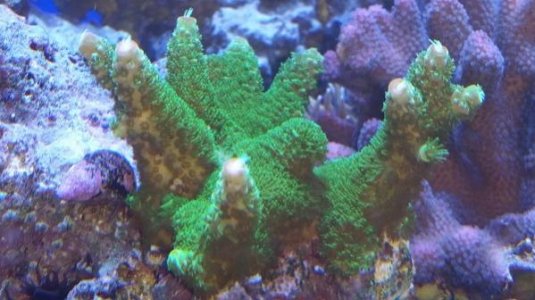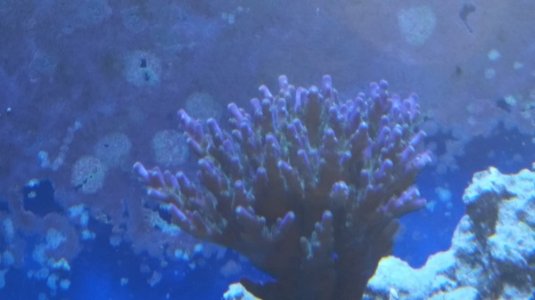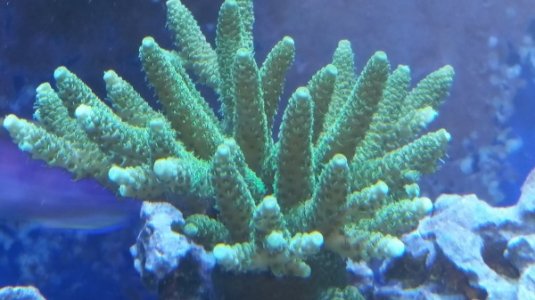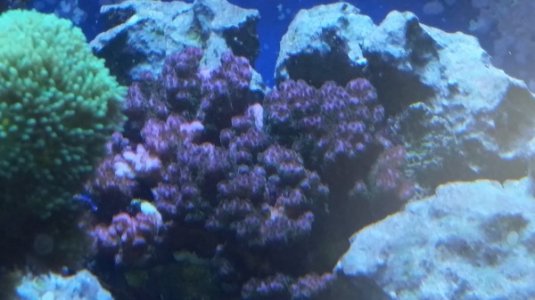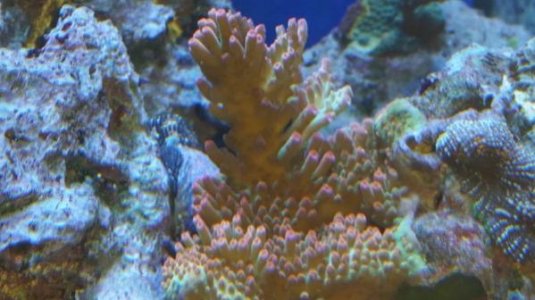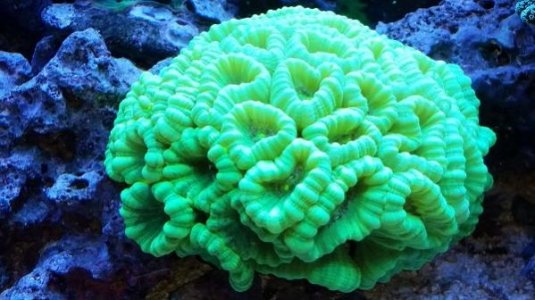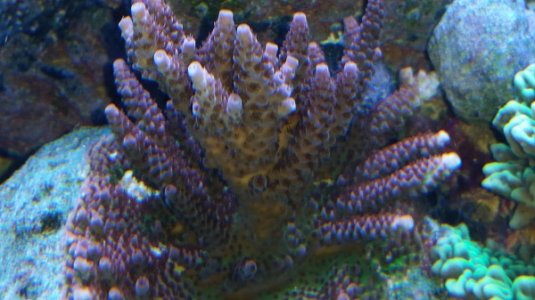the secret to colorful,healthy corals....obvious to some,elusive to many
So much good stuff here wow.
My thoughts:
1, NSW may be "low" in nutrients when tested however no one has considered the fact that the volume of nutrients is far more than our little boxes. They have all they need in there. Also they have linked increased PO4 with lower bleaching rates.
2, The reefs receive a constant food supply and fresh clean water 24/7. Gam Gam you really are in to something!
3, Replicating this in our homes is key I think. I have terrible colors and growth in my new system. My filtration consists of: oversized skimmer (SRO-5000), NOPOX, GFO and ROX .8 carbon in reactor, MarinePure block, Cheato fuge, high quality Pulkani LR, filter socks and flow (60x's display). I have few fish and because my system is new some algae so the standard reaction is to reduce nutrients as much as possible and limit feeding. My Nitrates are zero 0.00ppm RSP kit/PO4 is 0.02ppm Hanna ULR.
So my new approach:
Add fish! Just added two tangs
Feed! I now feed my fish all they want and then some! I mean it, a lot. Pellets, frozen, with Selcon, and Nori. I also feed my corals Reef Chili and coral frenzy alternating a couple times per week. I have already seen increased color and growth throughout but not any increase in algae.
Why hasn't algae started taking over?
Because my excess inorganic nutrients haven budged, still undetectable NO3 and less than .03 PO4. Still has been going on for the last 4-5 weeks.
I closely watch for increased growth on glass. When I see more film algae on surfaces I either clean the skimmer, change GFO/carbon, up my NOPOX dose. Also now that I have added an auto neck cleaner my water is cleaner than ever. I run filter socks and would love to remove them but micro bubbles are a problem for me.
The skimmer is the real work horse here. It's is well sized for my 180 display and 300gallons total system volume. In fact feeding more has caused it to operate better.
My ALK is high around 9.5 test almost daily. Maintained by Kalk.
Lighting is also intense. Kessil AP700 (X2), 70% intensity for 7 hours. I don't dare take it over 70, each time I've tried my montis bleach in days. I have measured my PAR and just about every square inch gets ~200 PAR or more. The majority of my corals are easily in the 300+ range.
Bottom line there is a direct link to coral growth and color with light intensity and feeding. Maybe the exact biological functions and chemistry of this link or other factors might be a mystery to us. There can be no doubt that more lighting needs more food, this creates suitable environment for increase growth that leads to a need for additional carbonate/bicarbonate.
Also note that high pH increase available bicarbonate needed for calcification. So a stable increase of pH is warranted to an extent that more bicarbonate is available to corals.
Here is some really good reading!
http://www.advancedaquarist.com/2002/4/chemistry#section-7
In conclusion I feel it is important to keep organics up for coral nutrition while keeping the broken down by inorganic products down (NO3, PO4).
Aaron





